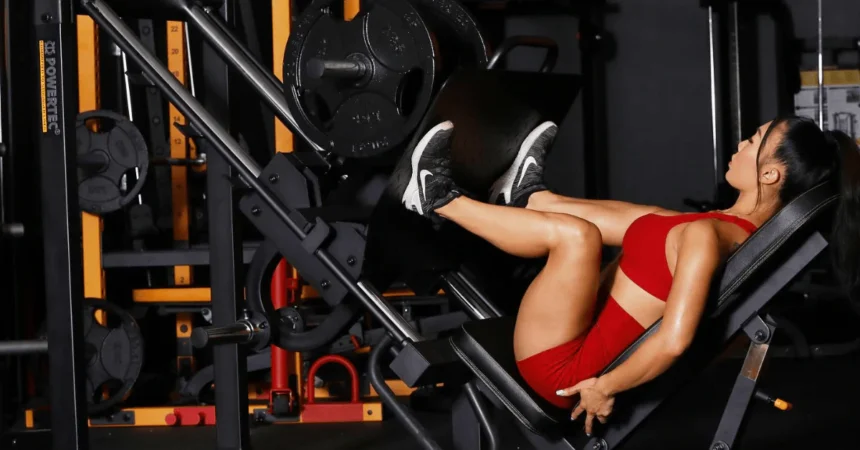The leg press is often overlooked in the gym, yet it holds a special place in the hearts of fitness enthusiasts. This powerful machine offers an effective way to build strength and muscle mass in your legs while keeping your joints safe from excessive strain. Whether you’re a seasoned lifter or just starting your fitness journey, understanding how to maximize the benefits of the leg press can elevate your workouts.
Imagine sculpting strong quads, hamstrings, and glutes with every push while enjoying a controlled movement that feels natural. The leg press isn’t just about pushing weights; it’s about harnessing power and enhancing performance for other exercises too. Join us as we delve deeper into this versatile piece of equipment and explore how it can transform your training routine!
Benefits of Incorporating Leg Press into Your Workout Routine
Incorporating the leg press into your workout routine offers numerous advantages for fitness enthusiasts. This exercise targets major muscle groups in your lower body, including the quadriceps, hamstrings, and glutes. By engaging these muscles effectively, you enhance overall strength and performance.
The leg press is also a fantastic way to build muscular endurance. As you progressively increase weights, it challenges your muscles without placing excessive strain on your back.
Another benefit is its versatility; whether you’re a beginner or an advanced lifter, adjustments can be made to suit your skill level. You can focus on high-rep sets for endurance or low-rep heavy loads for strength building.
Moreover, using the leg press machine helps improve stability and balance. It provides support as you push through heavier lifts while minimizing injury risks associated with free-weight squats.
Different Types of Leg Press Machines and Their Advantages
Leg press machines come in various designs, each offering unique advantages tailored to different fitness levels and goals.
The traditional horizontal leg press allows you to push weights directly up from a seated position. This setup targets your quads effectively while providing support for your back.
On the other hand, the 45-degree leg press machine positions you at an angle. This variation emphasizes not only the quadriceps but also engages your hamstrings and glutes more intensively.
For those seeking versatility, some machines offer adjustable footplates. Changing foot positioning can shift focus among muscle groups, allowing for a comprehensive workout experience.
There are single-leg presses designed for advanced users looking to enhance unilateral strength and balance. These variations cater to specific needs within any training regimen while ensuring safety and effectiveness throughout your workouts.
Proper Form and Technique for a Safe and Effective Leg Press
To maximize the benefits of the leg press, proper form is essential. Start by adjusting the seat to ensure your back is flat against it. Your feet should be placed shoulder-width apart on the platform.
When you lower the weight, keep your knees aligned with your toes. Avoid letting them cave inward or splay outward. Aim for a 90-degree angle at your knees—this helps protect your joints while engaging key muscles.
During exertion, push through your heels rather than your toes. This shift in focus targets not just your quadriceps but also engages glutes and hamstrings effectively.
Breathe steadily throughout each repetition. Inhale as you lower the platform and exhale when pushing up to avoid straining yourself.
Always start with lighter weights until you’re comfortable with the movement pattern before progressing to heavier loads.
Common Mistakes to Avoid When Using the Leg Press
Many gym-goers overlook the importance of proper foot placement on the leg press. Placing your feet too high or too low can shift the focus away from your quads and onto other muscle groups, leading to ineffective workouts.
Another common mistake is locking out your knees at the top of the movement. This not only puts unnecessary stress on your joints but also reduces muscle engagement during the exercise.
It’s crucial to avoid using excessive weight that compromises form. Lifting heavy without control can lead to injury and diminish gains.
Failing to engage your core while pressing can destabilize your body. A strong core helps maintain proper alignment, enhancing both safety and effectiveness.
Don’t rush through repetitions. Slow and controlled movements maximize tension in your muscles, yielding better results over time. Focusing on quality over quantity will serve you well in any routine.
How to Create a Leg Press Workout Plan
Creating a leg press workout plan can significantly enhance your lower body strength. Start by determining your fitness level and goals. Are you aiming for muscle gain, endurance, or overall toning?
Next, decide on the frequency of your workouts. Most people benefit from incorporating leg presses 1-3 times per week. This allows adequate recovery time between sessions.
When selecting sets and reps, consider starting with 3 to 4 sets of 8 to 12 repetitions. Adjust weights as needed to ensure that you’re challenging yourself without compromising form.
Don’t forget to mix in variations like single-leg presses or different foot placements. This adds diversity and targets various muscle groups effectively.
Always include warm-ups and cool-downs in your routine for optimal performance and injury prevention. A well-rounded approach will maximize the benefits of the leg press while keeping workouts engaging.
Conclusion: The Versatility of the Leg Press in Achieving Stronger Legs
The leg press is a powerful tool in the gym that offers numerous benefits for those looking to build stronger legs. Its versatility makes it suitable for individuals at all fitness levels, whether you’re just starting or are an experienced lifter. By incorporating various techniques and adapting your workout plans, you can target different muscle groups effectively.
Using the leg press not only improves muscle strength but also enhances endurance and stability. When used correctly, it promotes safe lifting practices while minimizing injury risks associated with heavy free weights.
With a variety of machines available, each offering unique advantages, it’s easy to find one that fits your personal goals. The key lies in mastering proper form and technique to unlock its full potential.
Avoiding common mistakes will further enhance your experience on this machine. Remember to listen to your body and adjust as necessary; progress takes time.
Creating a structured leg press workout plan ensures consistency in building strength over time. Embrace the journey toward stronger legs through dedicated training with the leg press as a staple component of your routine.


